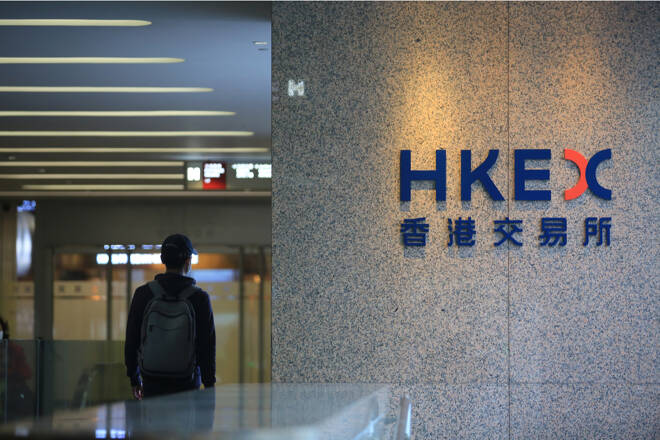Advertisement
Advertisement
Hang Seng Index: China Trade Growth Counters Trump Tariff Fears Amid Election Win
By:
Key Points:
- Hang Seng rises 1.03% on China’s trade growth; stimulus hopes counter US tariff fears under Trump.
- China’s 12.7% export surge offsets falling imports; Beijing stimulus measures may mitigate US trade tensions.
- Nikkei dips as tech stocks pull back despite stronger USD/JPY, with Softbank and Tokyo Electron leading losses.
US Markets: Trump Win Boosts Risk Sentiment
On Wednesday, November 6, US equity markets rallied as investors reacted to Trump’s US presidential election victory. The Dow jumped by 3.57%, with the Nasdaq Composite Index and the S&P 500 rallying 2.95% and 2.53%, respectively.
Tesla (TSLA) surged by 14.75%, with investors expecting Elon Musk to join the Trump administration.
Trump Wins the US Presidential Election with the Republicans Eyeing a Clean Sweep
On Wednesday, Donald Trump completed his political comeback, returning to the White House for a second term. Investors reacted positively to the election win. Furthermore, Republicans secured control of the US Senate and bid to retain control of the House. A clean sweep could grant Trump the political leverage for unimpeded policy implementation.
Aussie Trade Signals Weakening Demand
On Thursday, Aussie trade data drew investor interest as the surplus narrowed from A$5.284 billion to A$4.609 billion. Significantly, imports and exports slid by 3.1% and 4.3%, respectively, signaling weaker demand.
The latest trade data may influence the RBA rate path. Australia has a trade-to-GDP ratio of more than 50%, with 20% of its workforce in trade-related jobs. Trade terms could deteriorate further following Trump’s election victory. The president-elect warned of hefty tariffs on China and potential tariffs on other geographies, including the EU.
Expert Views on Aussie Trade
Shane Oliver, AMP Head of Investment Strategy and Chief Economist, remarked on the Aussie trade data, stating,
“Aust Sept goods trade surplus fell to $4.6bn with exports -4.3%mom (due to lower commodity exports) and imports -3.1%mom. Net export volumes are expected to contribute around 0.3% pts to Sept qtr GDP growth.”
China Exports Surge in October; Imports Reflect Weaker Demand
China’s trade data also required consideration amid concerns over Trump’s threat of 60% tariffs on Chinese goods. Exports surged 12.7% year-on-year in October, up from 2.4% in September. However, imports declined by 2.3% after increasing by 0.3% in September. Falling imports suggest a weakening demand environment, potentially impacting China’s economy and global trade.
Nevertheless, the export figures drove demand for Hong Kong and Mainland China-listed stocks as investors awaited updates from the ongoing Standing Committee National People’s Congress. Stimulus measures to boost consumer demand could counter concerns about US tariffs on Chinese goods.
Hang Seng and Mainland China Equities Steady After Trump Win
In Asian markets, the Hang Seng Index advanced by 1.03% on Thursday morning. Upbeat trade data from China and stimulus hopes countered US tariff fears. Real estate and tech stocks contributed to the morning gains as investors expect a 25 basis point Fed rate cut later today.
The Hang Seng Mainland Properties Index rallied 3.70%, while the Hang Seng Tech Index gained 0.90%. Major tech stocks Alibaba (9988) and Baidu (9888) saw modest gains of 0.11% and 0.68%, respectively.
Mainland China’s equity markets also climbed, with the CSI 300 and the Shanghai Composite rising by 0.70% and 0.88%, respectively.
Nikkei Dips on Tech Sector Pullback
In Japan, the Nikkei Index declined by 0.29% on Thursday morning. Tech stocks reversed their gains from Wednesday, overshadowing a stronger USD/JPY. On Wednesday, the USD/JPY jumped 1.99% to 154.620, responding to Trump’s US election victory.
Softbank Group (9984) and Tokyo Electron (8035) tumbled by 2.96% and 2.37%, respectively. Meanwhile, a weaker Japanese Yen boosted export stocks, with Sony Corp. (6758) and Nissan Motor Corp. (7201) gaining 0.52% and 2.42%, respectively.
ASX 200 Recovers on China’s Trade Data
The ASX 200 Index increased by 0.02% on Thursday morning. Sliding gold stocks countered rising tech, oil, and mining stocks, leaving the Index relatively flat. The S&P/ASX All Technology Index gained 0.43% in the morning session, tracking the Nasdaq.
Mining giants Rio Tinto Ltd. (RIO) and BHP Group Ltd. (BHP) advanced by 2.02% and 0.99%, respectively. Iron ore spot prices advanced on Thursday morning. Hopes of rising demand from China supported the morning gains.
However, Northern Star Resources Ltd. (NST) tumbled 6.02% after gold spot prices slumped by 3.09%.
Looking Ahead
Investors should monitor updates from the NPCSC meeting. Stimulus measures and Beijing’s response to the US election could influence risk sentiment. Stay informed with our latest news and analysis to manage your risks effectively.
About the Author
Bob Masonauthor
With over 28 years of experience in the financial industry, Bob has worked with various global rating agencies and multinational banks. Currently he is covering currencies, commodities, alternative asset classes and global equities, focusing mostly on European and Asian markets.
Did you find this article useful?
Latest news and analysis
Advertisement
